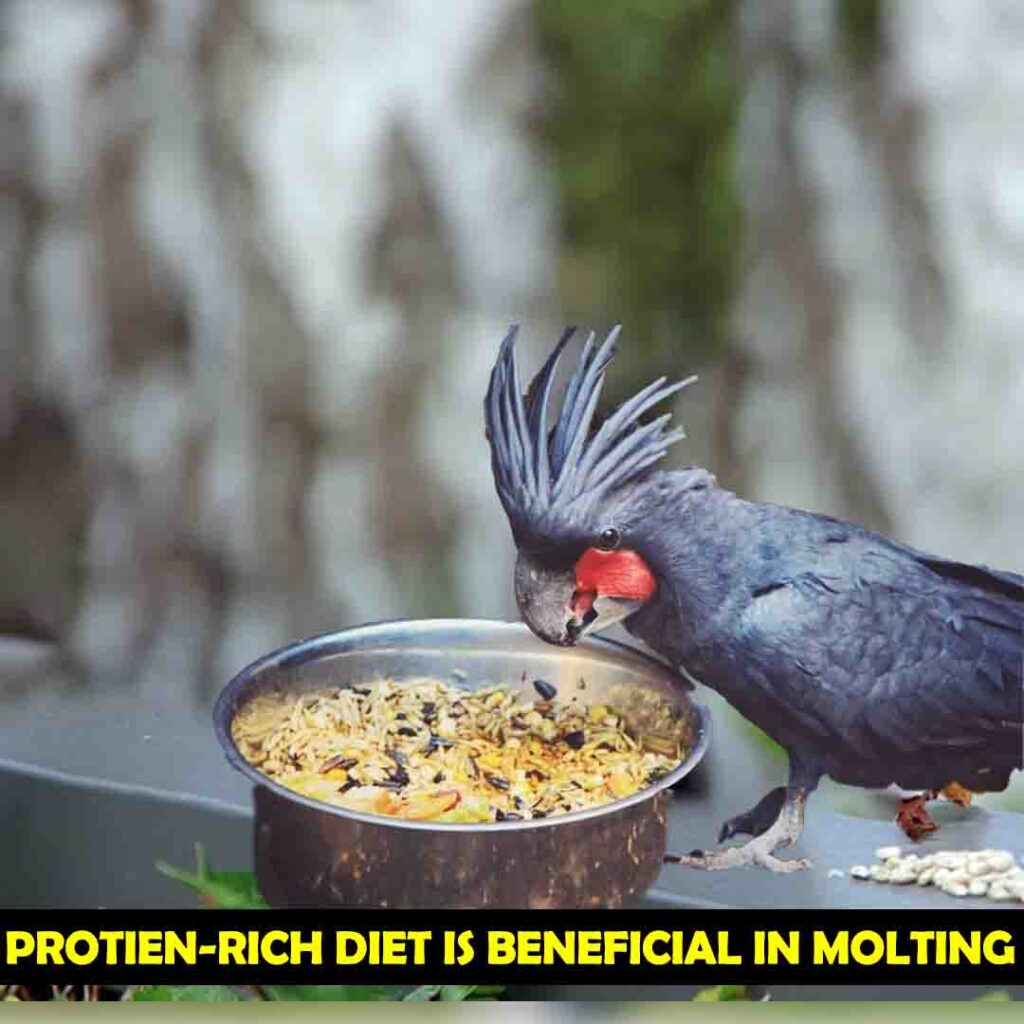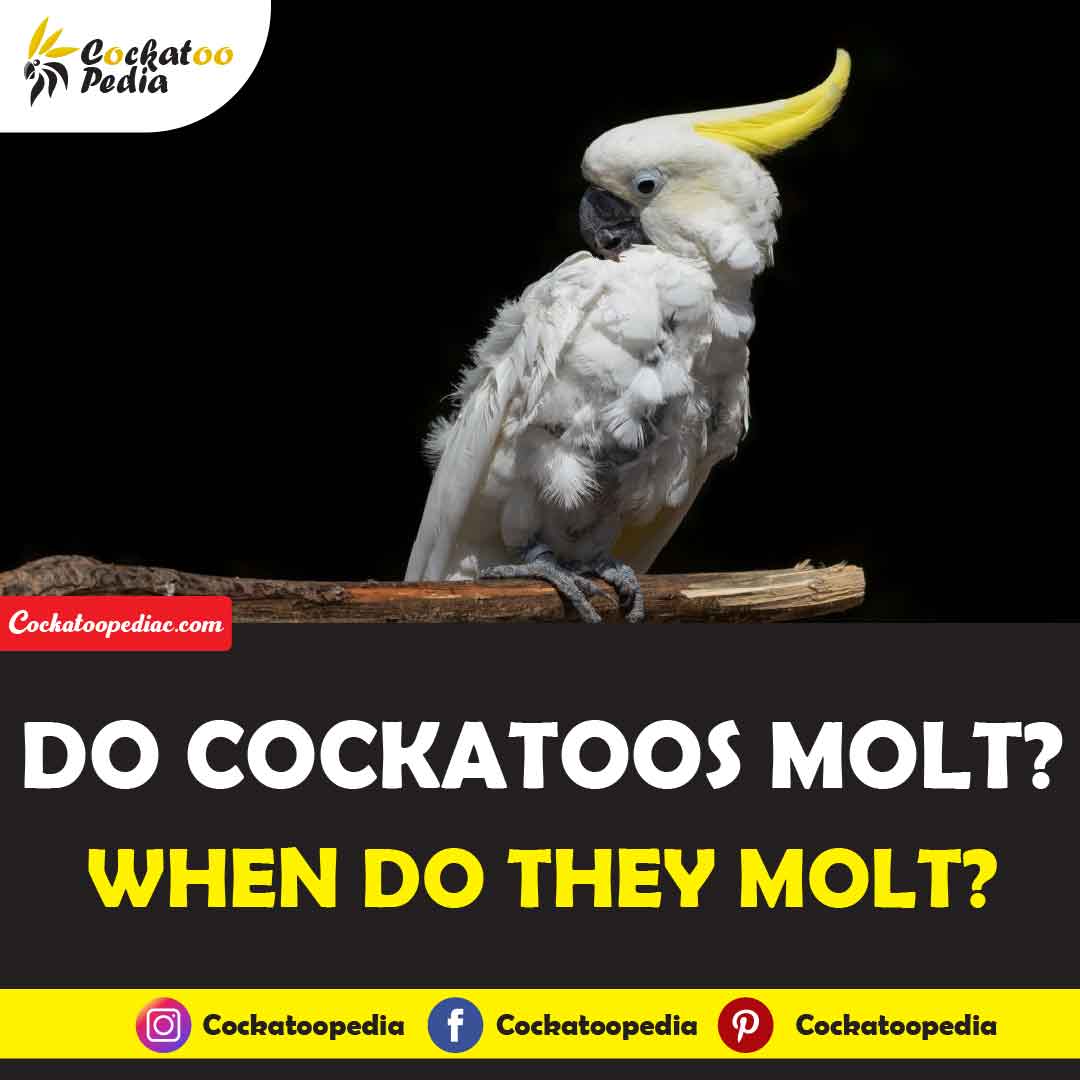Molting is a natural process in which new feathers replace old. All birds molt once or twice a year. It keeps birds safe from feather diseases. Let’s discuss whether cockatoos also molt or not.
Yes, cockatoos molt. Their molting occurs twice a year, in fall and spring. Molting does not occur at an early age, especially when the feathers are growing for the first time. It usually begins after 6 months of age. It starts with wing feathers, body feathers, and tail feathers molt.
Molting enables the regeneration of cockatoo feathers and their colors as they grow. Without molting, cockatoos can get feather diseases.
How Does Cockatoo Molting Look Like?
Cockatoo molting starts with feathers shedding, and the cockatoo starts looking shaggy and rugged. During this process, their skin becomes bald and slightly visible. Their plumage vanishes, and then pin feathers start emerging.

Typically, molting takes 8-12 weeks to complete. Some birds molt earlier, and some take even longer. During molting, they usually do not breed. During molting, their feathers shed gradually; not all feathers fall at once. It enables cockatoos to fly and protect themselves during molt.
Cockatoo Behavior During Molt
Molting is tough; it makes cockatoos aggressive, moody, and stubborn. Moreover, their bare skin makes it difficult to protect themselves in the cold. And their skin comes in direct contact with their surrounding, which is sometimes painful.
Keep patience and be gentle no matter how rude your cockatoo gets.
Cockatoo Breeding During Molting
During molting, cockatoo breeding decreases. They usually do not mate; even if they do, they do not lay eggs. Sometimes they even lay eggs, but the eggs are infertile.
After molting passes, cockatoos get new feathers and breed well. I’ve noticed my cockatoos usually breed when they are in full bloom with their complete feathers, and that’s usually right after molting completes.
How to Take Care of Cockatoos During Molting?
When cockatoos start losing feathers, they become sensitive to weather conditions. It is necessary to keep them in a warm environment so they are not caught by illness. Their cage should be kept in a slightly warm environment, away from windows.
Cockatoos naturally want to chew branches and leaves during the molting season. Putting branches and leaves inside their cage helps them pass through molting.
What to Feed Cockatoos During Molt?
Since after molting, new feathers grow, cockatoos need proper nourishment. Cockatoos must be fed a variety of fruits, vegetables, and seeds. Also, feed them a protein-rich diet like boiled eggs, dry shrimp, and wet bread. Since feathers are made of protein, feeding cockatoos a protein-rich diet is good for developing new feathers. (1)

Other Factors That Cause Feather Loss in Cockatoos
The molting process does not last for long and occurs only 1-2 times a year. But if your cockatoo is frequently molting, it is unusual. Apart from molting, several other factors can cause feather loss in cockatoos. For example, diseases like french molt and PBFD cause feather loss; sometimes cockatoos pluck their own feathers.
Final Thoughts
Although cockatoos lose their grace during molting, it is an essential process. Moreover, after molting, they look gorgeous. Always take good care of your cockatoo diet and environment during molting.

